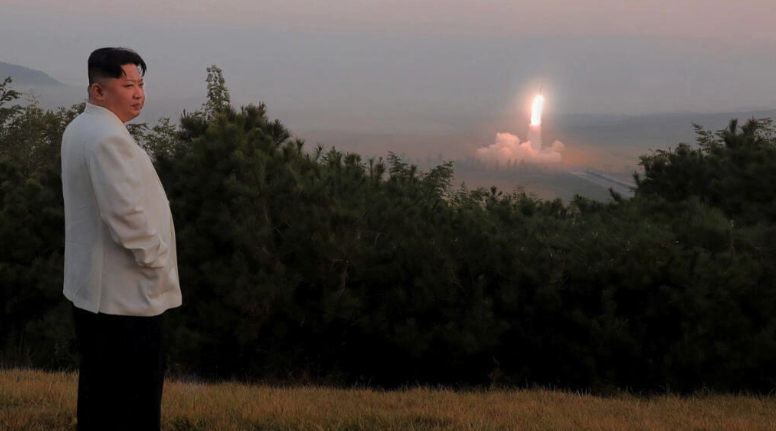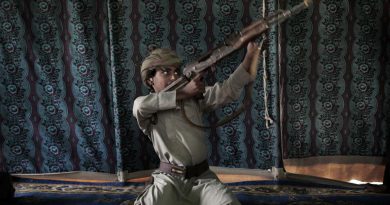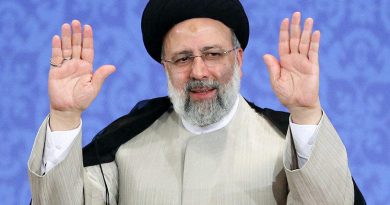Spectre of ‘tactical’ nuclear attack risks normalising weapons of mass destruction
But tactical weapons are still seen as a last resort on the battlefield – for a military facing a threat conventional weapons cannot neutralise
US President Joe Biden warned last week that the risk of nuclear “Armageddon” is now the highest since the Cuban Missile Crisis as Russia and North Korea engage in sabre-rattling on the use of “tactical” nuclear weapons. Such weapons are less destructive than “strategic” weapons designed to wipe out entire cities. But analysts worry that this talk of tactical weapons risks normalising weapons of mass destruction.
Nuclear-armed authoritarian states are increasingly invoking the spectre of using “tactical” nuclear weapons. North Korea said on Monday that it had simulated a “tactical” nuclear attack on South Korea. Russian President Vladimir Putin has repeatedly hinted at using tactical nuclear weapons against Ukraine as Moscow suffers heavy losses on the battlefield.
“Until this summer, people talked about nuclear weapons without really specifying what type they were – but then people started using this word ‘tactical’ increasingly often,” said Jean-Marie Collin, spokesman for the French branch of the International Campaign to Abolish Nuclear Weapons.
Battlefield Weapons
Tactical nuclear weapons differ from the more commonly known “strategic” weapons principally due to the “technicalities” of physics, noted Alexandre Vautravers, a defence analyst and editor of specialist publication the Swiss Military Review.
Whereas a nuclear ballistic missile hits hard on all front –including the force of the blast, thermal impact, radiation and electromagnetic disturbances – a tactical nuclear weapon seeks to “maximise the shock wave while minimising other undesirable effects”, Vautravers said, noting that such a weapon might be preferable if the country deploying it later “needs to get its troops across the affected area”.
Tactical nuclear weapons are also easier to transport on the battlefield than strategic missiles, which are stored in silos or specially designed submarines or planes.
Another key difference between tactical and strategic nuclear devices is the military objective of using the weapon, said Fabian Rene Hoffman, a research fellow at the Oslo Nuclear Project at the University of Oslo.
In theory, the purpose of strategic weapons is to “directly target other countries to prevent them attacking, while tactical warheads are supposed to be used to aid specific battlefield objectives”, said Jana Baldus, a nuclear arms control specialist at the Peace Research Institute in Frankfurt.
Tactical nuclear weapons are seen as more precise and more limited in their effects: “The explosion takes place on the ground or at a very low altitude; the objective is to destroy infrastructure or a precise target – and the effects can be limited to a radius of a few hundred metres to a few kilometres,” Vautravers explained.
But tactical weapons are still seen as a last resort on the battlefield – for a military facing a threat conventional weapons cannot neutralise, or a target too big for conventional missiles to hit. As such, they could be used to destroy a large military base or a column of tanks advancing towards the front.
Trivialising Nukes?
Nuclear weapons have not been used on the battlefield outside of the US atomic bombings of Hiroshima and Nagasaki in 1945 and there has since been something of an international taboo against their use.
“There’s a significant chance that people today would think of the bombs dropped on Hiroshima and Nagasaki as tactical nuclear weapons,” Baldus said.
But the “line between the tactical and strategic is really artificial”, she said. “The US and Russia have had plenty of debates about what’s ‘tactical’ and what’s ‘strategic’ – but they’ve never been able to agree.”
This ambiguity is reflected in NATO’s own definitions of nuclear forces, which vary widely by country. For France, NATO’s definition of a “strategic” nuclear weapon is linked to intention, to the “doctrine of deterrence rather than to technical characteristics”. For Russia, a strategic nuclear weapon is defined by reach – notably, weapons “designed to engage objects in geographically remote strategic regions (over 5500 km)”.
Some analysts warn that thinking of some nuclear weapons as less catastrophic than others minimises the risks to make the prospect of a “limited” nuclear deployment more tolerable.
According to Hoffman, the increasing public use of the word “tactical” has a “highly political motive, which is to legitimise the use of nuclear weapons in a conflict”.
The term produces an “unconscious bias by making people think there is a type of nuclear weapon that is more acceptable than others because its use would be limited to military objectives”, Baldus said.
This is a particularly dangerous argument because it tends to lull people into forgetting that all nuclear weapons – whether tactical or strategic – are “weapons of mass destruction”, said Collin.
And the relative power of nuclear weapons should not be underestimated, he said.
“It’s worth noting that the biggest conventional weapon in the US arsenal, known as MOAB (Massive Ordnance Air Blast Bomb), has a destructive power equivalent to 11 tonnes of TNT whereas the least powerful of the supposedly ‘tactical’ Russian nuclear weapons has the destructive power of 300 tonnes of TNT,” Collin said.
Moreover, Russia’s fixation on tactical nuclear weapons risks setting off a new arms race. France currently has only strategic nuclear weapons. The US, meanwhile, has decommissioned its tactical arsenal in favour of conventional weapons.
But if Moscow continues invoking the threat of using tactical nuclear weapons on the battlefield in Europe, that could well push other nuclear powers to bolster their own “tactical” stockpiles. And the more weapons of mass destruction are in circulation, the greater the risk that they will eventually be used.
This article was translated from the original in French.



